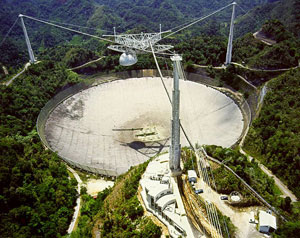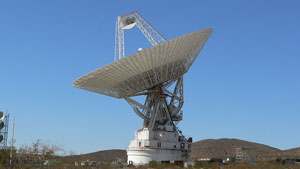SETI

The search for extraterrestrial intelligence (SETI) is the collective name for a number of activities people undertake to search for intelligent extraterrestrial life. SETI projects use scientific methods in this search. For example, electromagnetic radiation is monitored for signs of transmissions from civilizations on other worlds. Some of the most well known projects are run by Harvard University, the University of California, Berkeley, and the SETI Institute. Since the United States government withdrew funding for SETI projects in 1995, projects have been primarily funded by private sources.

Extrasolar Planets

An extrasolar planet, or exoplanet, is a planet outside the Solar System. A total of 861 such planets (in 677 planetary systems, including 128 multiple planetary systems) have been identified as of March 22, 2013. The Kepler mission has detected over 18,000 additional transit events, including 262 that may be habitable planets. In the Milky Way galaxy, it is expected that there are many billions of planets (at least one planet, on average, orbiting around each star, resulting in 100–400 billion exoplanets), with many more free-floating planetary-mass bodies orbiting the galaxy directly. The nearest known exoplanet is Alpha Centauri Bb. Almost all of the planets detected so far are within our home galaxy the Milky Way; however, there have been a small number of possible detections of extragalactic planets. Astronomers at the Harvard-Smithsonian Center for Astrophysics (CfA) reported in January 2013, that "at least 17 billion" Earth-sized exoplanets are estimated to reside in the Milky Way galaxy.
Most known exoplanets are giant planets believed to resemble Jupiter or Neptune, but this reflects a sampling bias, as massive planets are more easily observed. Some relatively lightweight exoplanets, only a few times more massive than Earth (now known by the term Super-Earth), are known as well; statistical studies now indicate that they actually outnumber giant planets while recent discoveries have included Earth-sized and smaller planets and a handful that appear to exhibit other Earth-like properties. (Source: wikipedia)
Copyright Timelines Webdesign 2013 - 2020




